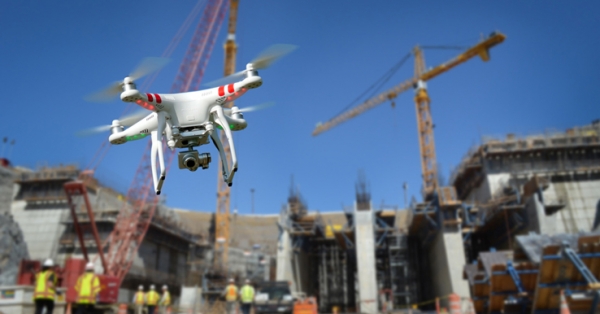How Sonoran Desert Institute is Shaping Drone Use in Construction Oversight

In the construction industry, ensuring safety is paramount. The introduction of drone technology has revolutionized how safety is managed, offering real-time aerial surveillance that significantly enhances oversight. Drones, also known as Uncrewed Aerial Vehicles (UAVs), provide project managers with a comprehensive view of construction sites, allowing them to identify and address hazards that might otherwise go unnoticed. Sonoran Desert Institute (SDI), which is accredited by the Distance Education Accrediting Commission (DEAC), offers online programs that play a crucial role in preparing future drone operators to leverage this technology effectively, ensuring construction sites become safer and more efficient.
Leveraging Drones for Real-Time Safety Monitoring
Drones have transformed construction safety by providing real-time surveillance of vast and complex sites. Equipped with high-resolution cameras and advanced sensors, drones can scan construction areas within minutes, identifying potential risks such as unstable structures, improperly stored materials, or hazardous terrain. Unlike traditional ground-based inspections, drones offer a bird’s-eye view that enhances the ability to spot safety issues before they escalate.
For example, drones can monitor heavy machinery operations, ensuring equipment is used safely and that workers maintain proper distances. They can also detect safety violations, such as missing protective gear, and provide actionable data for immediate intervention. By enabling proactive safety management, drones have become indispensable tools for construction teams.
Reducing Risks by Replacing Manual Inspections
Traditional construction site inspections often require personnel to enter hazardous areas, such as high scaffolding, confined spaces, or uneven terrain. These inspections expose workers to risks, including falls, equipment-related accidents, and environmental hazards. Drones eliminate these dangers by allowing inspections to be conducted remotely.
For instance, drones can inspect high-rise buildings, bridges, or other elevated structures without requiring workers to climb scaffolding or operate cranes. Similarly, drones can navigate confined spaces like ventilation systems, tunnels, or pipelines that may be unsafe or inaccessible for humans. By replacing manual inspections with remote assessments, drones significantly reduce the likelihood of accidents while improving efficiency.
Addressing Safety Issues with Precision
Drones are particularly effective in addressing specific safety concerns that commonly arise on construction sites. Some of the critical applications include:
- Preventing Falls: Drones can inspect rooftops, elevated platforms, and scaffolding, minimizing the need for workers to operate at dangerous heights.
- Monitoring Equipment Usage: By providing an aerial perspective, drones ensure that heavy machinery is operated safely and that workers maintain a safe distance from moving equipment.
- Detecting Hazardous Materials: With advanced sensors such as thermal imaging, drones can identify improperly stored flammable materials or detect chemical leaks, enabling quick mitigation of risks.
- Assessing Structural Integrity: Drones equipped with high-resolution cameras can capture detailed images of structures, allowing project managers to identify cracks, weaknesses, or other potential issues early.
By addressing these safety challenges, drones enhance the overall safety culture on construction sites.
Data-Driven Decision-Making in Construction Safety
The data collected by drones is critical for informed decision-making on construction sites. Drone operators provide detailed visual and sensory data that can be analyzed to detect trends, identify recurring issues, and guide strategic safety interventions. For example, if a drone detects structural weaknesses in a newly built bridge, engineers can use the imagery to evaluate the severity of the issue and develop a timely repair plan.
Real-time data from drones also allows for immediate course corrections. If unsafe practices are observed, such as workers operating in restricted zones, safety officers can enforce protocols on the spot. This data-driven approach ensures that safety measures are both proactive and responsive, reducing the likelihood of accidents and project delays.
Enhancing Communication and Collaboration
Drones enhance safety and improve communication and collaboration among construction stakeholders. By capturing high-quality aerial images and videos, drones provide a visual representation of site conditions that can be easily shared with project managers, safety officers, and external stakeholders. This transparency fosters better decision-making and ensures that all parties are aligned on safety priorities.
Additionally, drones enable ongoing documentation of construction progress. Regularly captured aerial snapshots allow teams to track changes over time, compare completed work against plans, and identify areas that need further attention. This detailed documentation is invaluable for maintaining accountability and ensuring compliance with safety standards.
The Role of Skilled Drone Operators
The successful integration of drones into construction safety protocols depends on skilled operators who can navigate complex environments and interpret data accurately. Drone operators are responsible for more than piloting—they must also understand the dynamics of construction sites and the specific safety challenges they pose. This includes operating drones in compliance with regulations, such as maintaining safe flight paths and avoiding interference with on-site activities.
Operators must also be proficient in using advanced tools, such as LiDAR and thermal imaging sensors, to collect actionable data. Their ability to analyze and communicate this information effectively ensures that drones are used to their full potential in enhancing safety.
The Future of Drones in Construction Safety
As drone technology continues to evolve, its applications in construction safety are expected to expand. Innovations such as Artificial Intelligence (AI) and machine learning are being integrated into drone systems, enabling them to autonomously identify hazards and suggest corrective actions. For instance, AI-powered drones could predict risks by analyzing patterns in site activity, such as heavy equipment movements or worker proximity to dangerous zones.
Future drones may also incorporate Augmented Reality (AR), providing safety officers with real-time overlays of hazard zones and optimal routes for workers. These advancements promise to further enhance safety and efficiency on construction sites, solidifying drones as indispensable tools for the industry.
The integration of drones into construction safety protocols has transformed the industry, providing real-time surveillance, mitigating risks, and streamlining decision-making. By addressing critical safety hazards such as falls, equipment collisions, and structural weaknesses, drones have become indispensable for enhancing site oversight and creating safer work environments. Sonoran Desert Institute trains aspiring drone operators in the essential skills and practical expertise required to navigate this fast-evolving field. Through its comprehensive approach, it empowers future professionals to harness drone technology effectively, ensuring construction sites remain safer and operate more efficiently.





